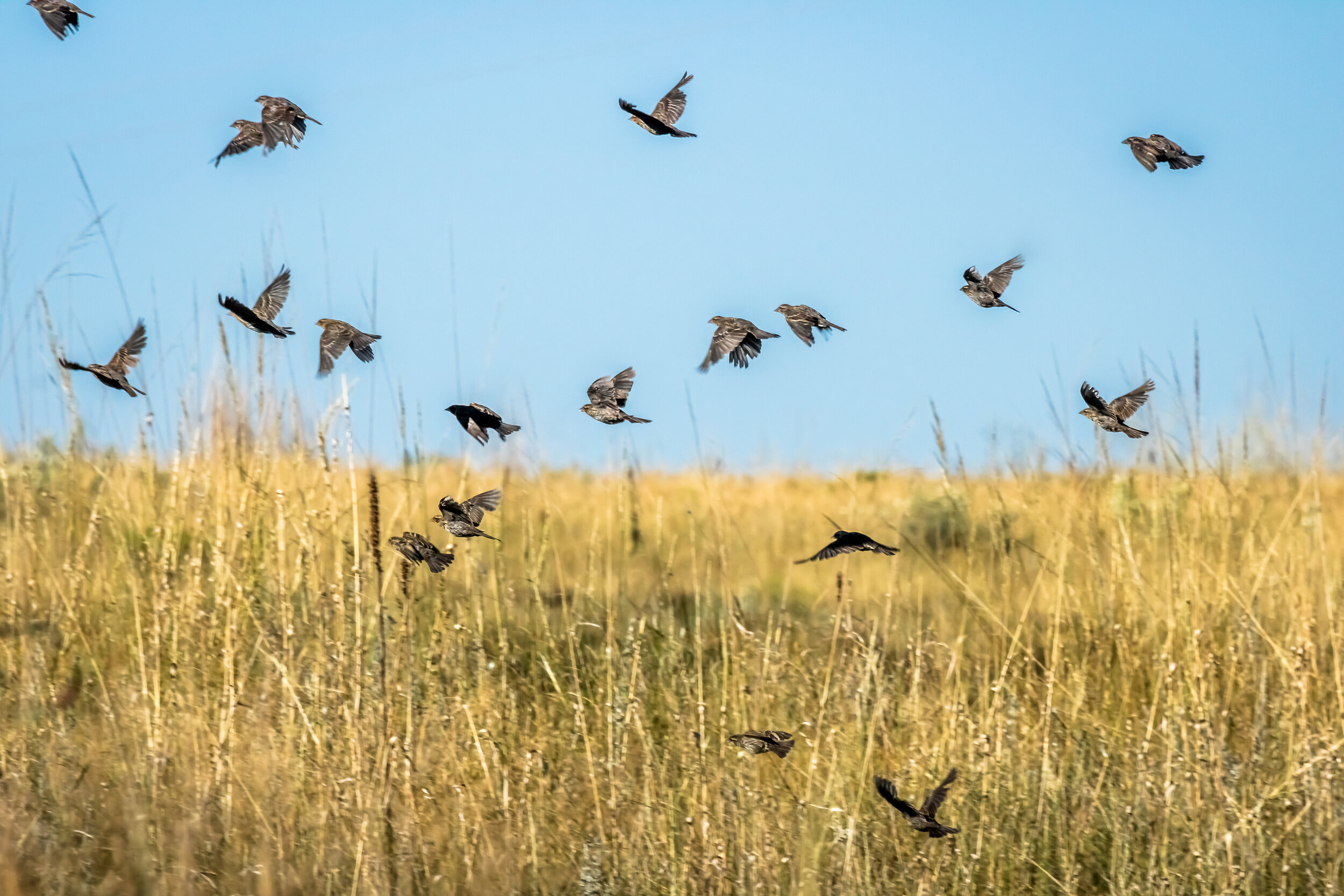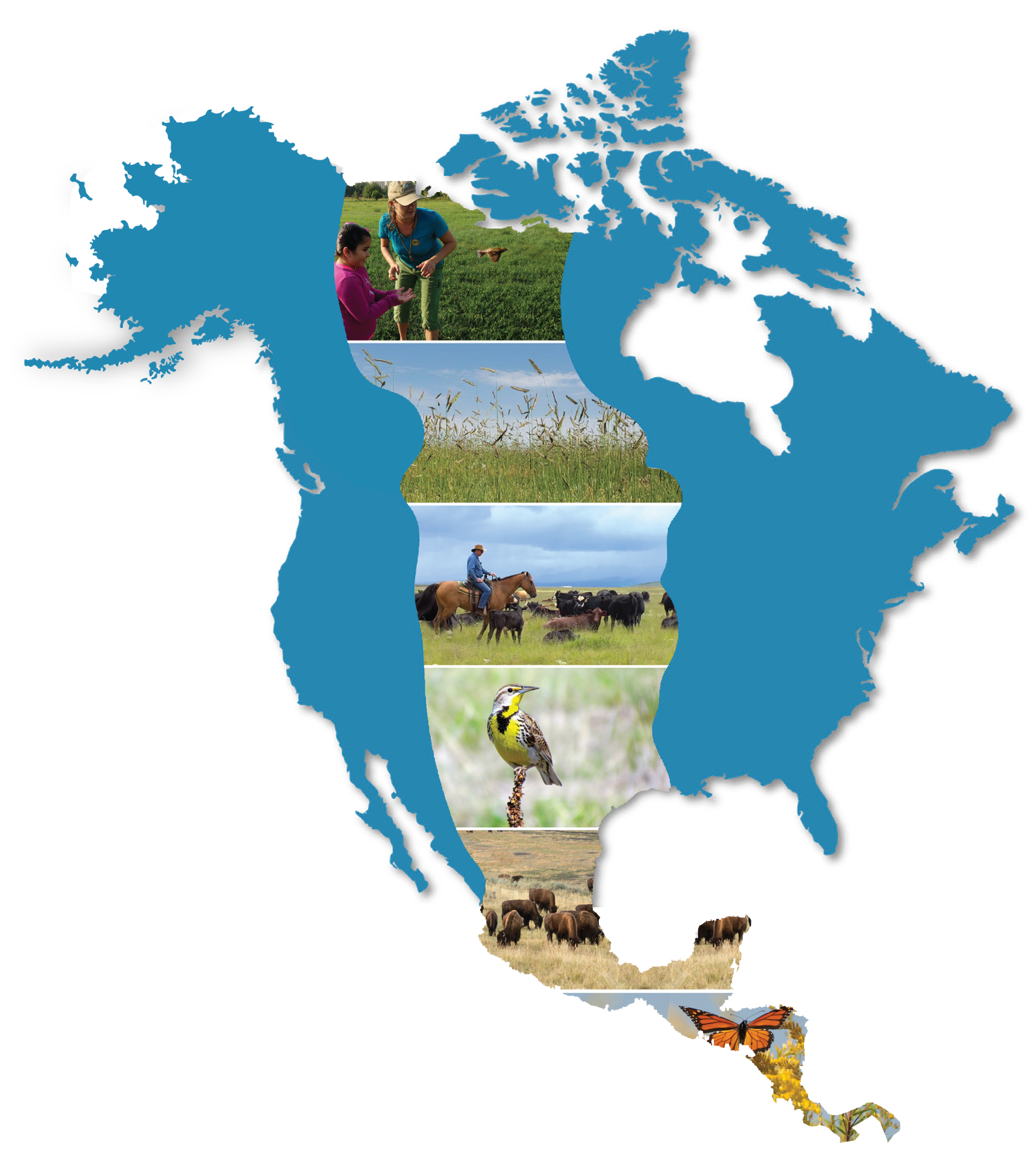
Ranching, Grazing, & Cattle
Recent Features
The Intermountain West Joint Venture (IWJV) has produced a six-part film series in collaboration with the Bureau of Land Management (BLM): Grazing Management for the Future. This film series highlights the BLM’s Outcome-Based Grazing Authorizations through the ranching families and federal staff dedicated to environmental and rural community well-being.
Articles & Frameworks
Bird-friendliness Index Summary and Hodgins Farm Case Study: Birds Canada has adapted the Bird-friendliness Index to the working agricultural working landscapes of the Canadian Prairies. By effectively and efficiently measuring and communicating biodiversity impact from a farm level, it can be applied within innovative approaches to reward biodiverse production systems. This document outlines the goals, methodology behind the Bird-friendliness Index (BFI), and presents results of the work so far. The Hodgins case study provides a practical application of the BFI at Hodgins Farm in Manitoba, Canada to illustrate how the Bird-friendliness Index can bean effective tool to measure and communicate impacts on biodiversity from a farm level.
Xerces workshop on pollinators, grazing, and the Great Plains
Year-in-review reports and learning from the Society for Range Management
South Dakota Agricultural Land Trust tells the story of its first conservation easement
Grasslands Synthesis Project Open File Reports continue to be published with lots of helpful resources:
Successful Farming: Diversifying livestock and business on a South Dakota ranch
On his South Dakota Ranch, Robert Boylan is working with nature and diversifying the operation to secure a bright future.
National Cattlemen's Beef Association Highlights Great Plains Grassland Initiatives in Upcoming Show
Researchers Evaluate and Identify Consistent Indicators to Support Sustainability on U.S. Ranches
It’s Not the Cow, It’s the How: A Vegetarian Became Beef’s Biggest Champion
Newly Released Working Lands for Wildlife Framework from NRCS
“Rangeland Management and Pollinators: A Guide for Producers …”
Research & Presentations
Voices from the Land: Results from Rancher Survey commissioned by the Central Grasslands Roadmap
Ranchers, producers, and landowners with access to a variety of financial and technical assistance programs are critical in supporting healthy grasslands. In order to receive input and feedback from these three groups, the Ranchers, Landowners, and Producers Roadmap Input Survey was launched to ensure that the priorities identified in the Central Grasslands Roadmap will support ranchers.
“Understanding Rural Attitudes Toward the Environment and Conservation in America”
Sustainable Grazing Lands Factsheet
According to The Nature Conservancy (TNC), grazing has the largest ecological footprint of any agricultural activity. In collaboration with landowners, public and private organizations, and government agencies, TNC hopes to transform the practices of the $76 billion beef industry to be more environmentally sustainable and place the livelihood of natural grassland ecosystems first.
TNC Video Spotlight of the Flint/Osage Hills and Conservation Easements
Grazing Like It's 1799: How Ranchers Can Bring Back Grassland Birds by Hannah Waters, National Audubon Society
Total grassland bird species have declined 40% since 1966: a loss attributable to the fact that more than 60% of North American grasslands have been lost to land conversion and consumption. Audubon’s North American Grasslands & Birds Report not only identifies the most vulnerable species and grassland areas, the Report identifies an unlikely yet promising solution: grazing.
Profiles in Soil Health from the USDA NRCS South Dakota
This profile in Soil Health follows the journey of the Neuharth Family as they have worked to build soil health and increase diversity in both the plants they grow and the animals they raise, near Fort Pierre, SD. Levi Neuharth’s father David, began by transitioning the farm to no-till and the family has since worked together to increase diversity in their crop rotation, plant full season and after harvest cover crops, integrate livestock onto cropland, as well as to utilize various grazing management practices. With an overarching goal of preserving and enhancing the land for the future, all generations continue to learn and work together to increase the diversity and health of the entire operation.
“New research finds ranchers consider diverse factors in managing their land,”
Conserving “working wetlands” is difficult without ranchers’ buy-in to solutions, however, the ranchers’ input is often absent from discussion. This study, published by the Intermountain West Joint Venture in collaboration with Virginia Tech, University of Montana, and Partners for Conservation, collected information from ranchers to find out what factors they consider in managing their land.
”Policy instruments and incentives for conservation on working landscapes” by Jeremy Pittman
A presentation on collaborative conservation efforts and their results on farmers. The presentation details the implementation of land securement, conservation easements, and considers the barriers present to cooperation from farmers and other stakeholders.
"How your purchasing decisions can save our most endangered ecosystem" by Marshall Johnson
It is undeniable that native grasslands and wetlands are the most endangered ecosystem, along with its birds and range of ecosystem services. However, the tangibility of consumer effects on the loss of these lands is sometimes lost on both conservationists and consumers themselves. In his TEDx talk, Marshall Johnson speaks on the power of consumer decisions to save the world’s “most endangered ecosystem.”
Project Spotlights
NEW GRASSLANDS CONSERVATION INCENTIVES PROJECT TO BENEFIT CANADIAN RANCHERS AND BIRDS by Dr. Silke Nebel, Birds Canada
Prairie grasslands provide essential habitat to prevent the extinction of unique prairie birds and other wildlife. The vast majority of these grasslands are working landscapes, where Canadian ranchers raise and graze their cattle. Grazing is an essential process in keeping grasslands healthy. However, the remaining tracts of native prairie grasslands are under threat by the tremendous market pressure on ranchers to plow and cultivate rather than maintain traditional pastures. Read More …
Burger King, Cargill and WWF Launch Grassland Restoration Project from Drovers News Source
As global demand for protein increases, ranchers, agribusinesses, restaurants and conservation partners are coming together to feed a growing population, address climate change and protect the planet. Burger King® restaurants and Cargill are teaming up with World Wildlife Fund (WWF) and ranchers within the Northern Great Plains to launch a three-year grasslands restoration program. This initiative brings together two major companies who deliver beef to Americans to support the rehabilitation of less productive soil into thriving ecosystems– with cattle playing a critical role
Case Study: Increasing Capacity from the Ranchers Stewardship Alliance
It can be difficult to encourage farmers to farm sustainably while helping them achieve a profit at the same time. A prime example of community-based conservation, the Ranchers Stewardship Alliance (RSA) is a cooperative working to simultaneously support both farmers and the sagebrush ecosystem in Phillips County, Montana.
